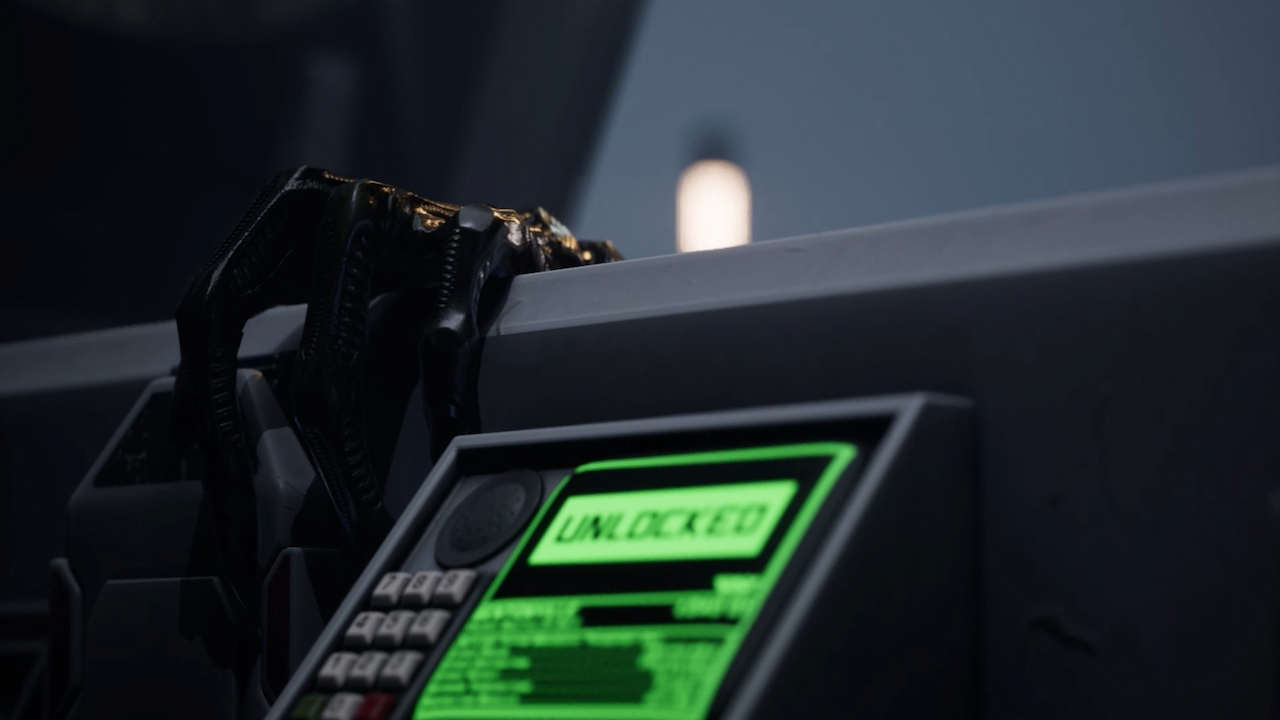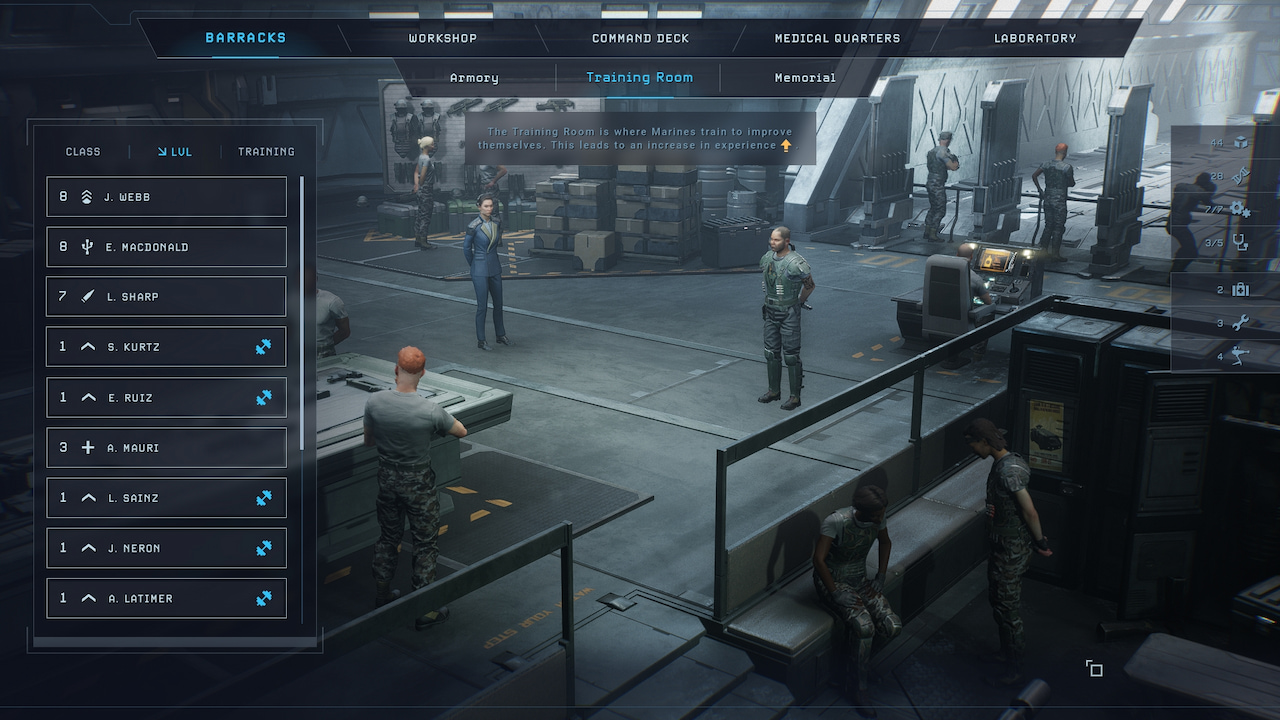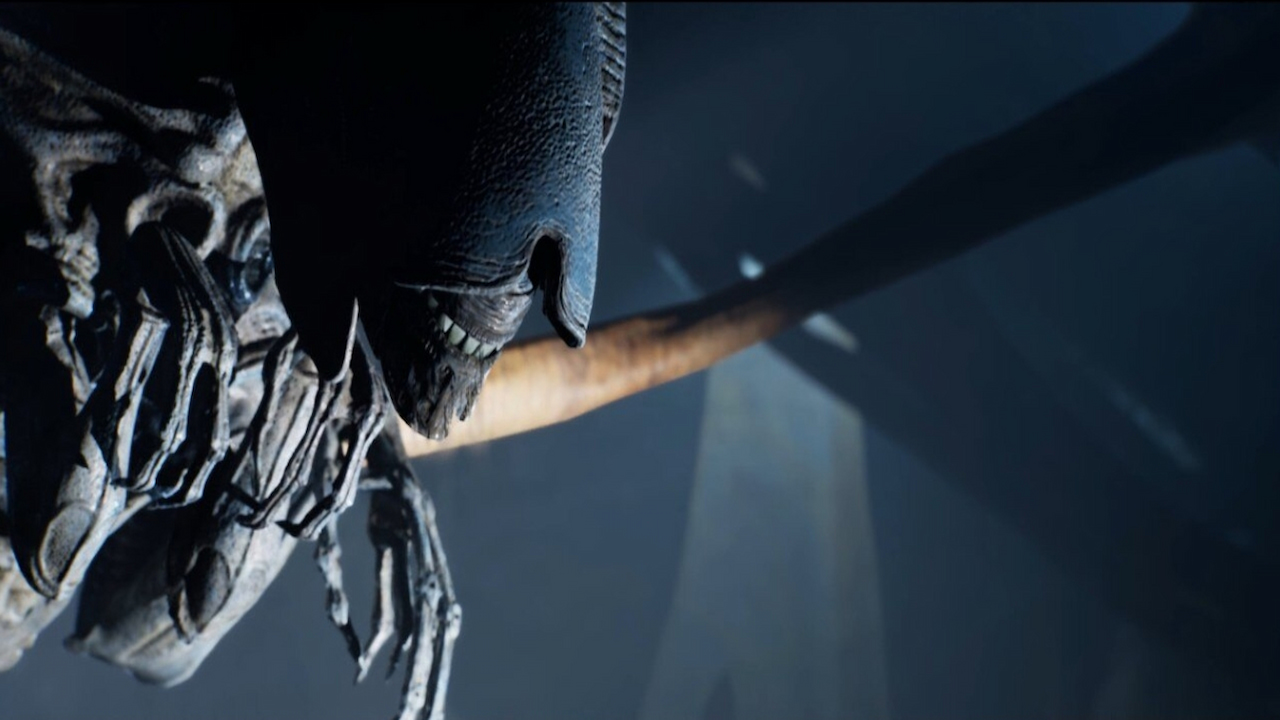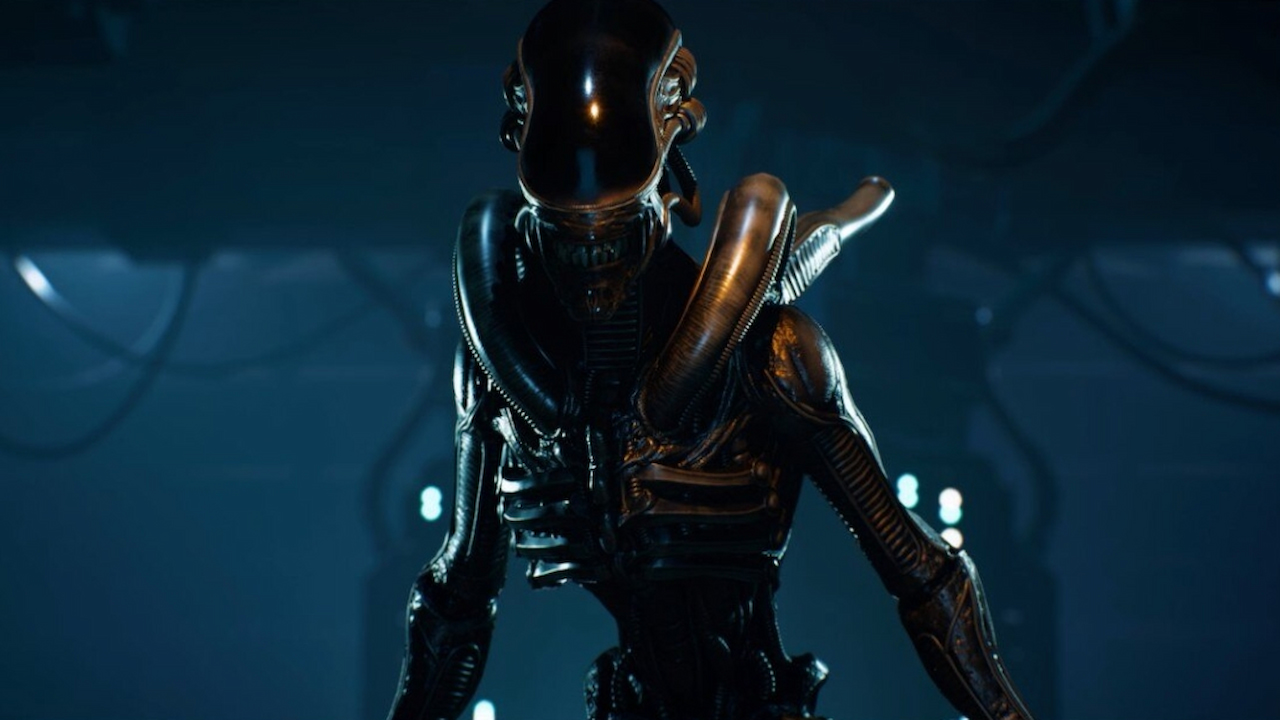Embark on a thrilling adventure with Aliens: Dark Descent — a squad-based action game set in the iconic Alien franchise by publisher Focus Entertainment and Developer Tindalos. As the commander of a team of tough Colonial Marines, you will end a dangerous Xenomorph outbreak on Lethe. Experience intense real-time combat as you face off against infamous Xenomorphs, rogue operatives from the insatiable Weyland-Yutani Corporation, and a range of new, terrifying creatures in the Alien franchise. If you’re a die-hard fan of the Aliens franchise, Aliens: Dark Descent is a game you simply cannot miss and becomes one of the best Aliens video games, despite having a few shortcomings.
The Story

The USS Otago is currently on its shakedown run as it enters the atmosphere of Lethe, a moon, in the year 2198. At the same time, the Brettonville shuttle docks at Pioneer Station to deliver its cargo. However, an infiltrator unlocks the crates, revealing them to contain dangerous facehuggers and a fierce Warrior Xenomorph. After narrowly escaping, Hayes activates the Cerberus protocol, which Weyland-Yutani created, to enforce a planetary quarantine should an unforeseen event like a Xenomorph infestation happen.
Unfortunately, the protocol also resulted in the partial destruction of the Otago, which crashed into Lethe. During this process, Hayes is attacked by a Warrior Xenomorph but rescued by Sergeant Jonas Harper and his team of Colonial Marines. Together, they flee the station and head towards the damaged Otago. Harper is then appointed as the leader of the remaining Marines, while Hayes takes charge of the bridge.
At this stage of Aliens: Dark Descent, you take charge of your squad of Marines, marking the start of the game. Without giving too much away, the storyline draws significant inspiration from Aliens 1-3, staying true to the franchise. The writing is exceptional, the characters fleshed out, and you will want to keep playing to see what happens to the Otago next, giving it that “just one more mission” factor.
Commanding Your Marines

In Aliens: Dark Descent, players assume the role of a commander leading a team of four US Marines across different colonies and bases on Lethe. However, the design decision that requires you to control the entire squad instead of individual Marines feels like a mistake. Although you can issue specific orders to each Marine in the squad, there is a limitation to what you can control. For instance, you can give individuals a task outside combat but can’t deploy your squad around a room and focus on a choke point from multiple angles. This is because each unit makes up a piece of your squad, and they must move and attack as a group while in formation. To make up for this, you can deploy turrets to cover those areas, but they break easily when attacked by Xenomorphs, and your entire crew will need to travel together to fix it because your squad is vulnerable when not together.
Initially, the limitation wasn’t much of a problem, but as the game progressed, it caused more complications. This was particularly noticeable when trying to rescue civilians, as they insisted on standing in front of the squad, acting as human shields instead of following behind as they would in reality. As a result, there were some aggravating instances where you had to modify your strategy or make the tough decision to restart a mission if one of them was slain by a Xenomorph.
After completing a mission, your Marines may have experienced injuries and trauma from battling Xenomorphs and cultists. This can cause them to become tired and emotionally affected, which will cause adverse status effects (or take them out of the action altogether). To address these issues, you must assign them to Medbay, where their injuries can be healed and their emotional traumas can be worked through. However, it’s important to note that this process takes time, and you may have to strategize and rotate in healthier Marines until your squad is back to full strength. This realistic aspect of Aliens: Dark Descent is highly appreciated, as it sheds light on the challenges and difficulties soldiers face in war, especially against foes as formidable as Xenomorphs.
Customizing Your Squad

In Aliens: Dark Descent, one of the most exciting features is the ability to customize your squad completely. You have complete authority over each member, from their appearance to their name. Moreover, you can select from five classes: Medic, Recon, Sergeant, Gunner, and Tecker, and assign each member with unique abilities that make them an unstoppable unit. It’s no surprise that they’re the ultimate Xenomorph killing squad in the Aliens franchise. For instance, the Tecker can deploy a drone that can weld/unweld doors and attack Xenomorphs, the medic can reduce stress levels when healing damage, and the Sergeant can boost the stats of your entire squad. You have complete control over how you construct your squad of Marines, and there is no incorrect answer, which is fantastic.
You can also build a large stable of reserve Marines stationed on the Otago when not assigned to your squad. Although your squad can only consist of four Marines, you can enroll the remaining Marines in rigorous training to automatically increase their levels when not being used. This unique feature distinguishes the game from other tactical games where units remain idle. Although you may not utilize every Marine on the Otago, they will be helpful when your squad needs to rest or if one of your Marines dies (RIP Recon E. Smith, you served me well). While the replacement Marines may not be as experienced or powerful as the ones they are replacing, they are still a better option than an unrealistic level 1 unit.
You will develop a strong bond with your squad as you nurture your marines, molding them from inexperienced recruits into battle-hardened veterans. Personalizing their names, experiences, classes, and abilities to complement those of their three squad mates makes losing a squad member devastating, prompting a desire to restart the mission to get them back (which will lose you hours of progress if you choose the No One Can Hear Them Scream save system option).
Fighting Xenomorphs

In Aliens: Dark Descent, players are given a preview of the Xenomorph type they will encounter during a specific mission through well-crafted cutscenes. These scenes are awe-inspiring, comparable to the movies, leaving players anxious about their inevitable encounters during the mission. For example, players witness a facehugger attacking crew members at the start of the game. As the mission progresses, players must quickly kill a wave of facehuggers to keep them from impregnating their squad members.
The combat experience is quite enjoyable despite the poor sound effects. By accessing the skills menu of your squad, you can either slow down time or pause the game entirely. This allows you to order your squad members to attack the Xenomorphs in various ways based on the current situation. However, you only have a certain number of Command Points in combat, which are the number of commands you can issue to your Marines, making every action count as they take time to respawn.
For example, if there’s just a single Drone Xenomorph, you can instruct your Recon Marine to take it down with a single long-range headshot using her sniper rifle before it sees you and alerts other Xenomorphs. Alternatively, you can have the gunner set up his smart gun on a tripod while he completes an objective, keeping the rest of the squad safe. Finally, when you’re overwhelmed (which is bound to happen), you can use explosives like a grenade that will damage Xenomorphs and cause a stasis field that slows them down if they didn’t die in the initial blast, giving your marines extra time to mop up. Other fun weapons include an RPG, Incinerator, Plasma Gun, Sub-Machine, Landmine, etc… You have many weapons and tools for your specific playstyle.
Visuals

I played Aliens: Dark Descent on Steam Deck. As a fan of the game’s cutscenes, I invested hours adjusting my settings to achieve the best possible graphics without compromising performance. Despite the game not being optimized for Steam Deck and receiving an Unsupported rating through Valve, I pushed it to its limits and was thoroughly impressed with the graphical results. Interestingly, my dad, who introduced me to the Aliens franchise during my childhood, was captivated by the Xenomorphs and couldn’t help but glance at my screen during the cutscenes.
For the remainder of the game, you will switch between a third-person overhead view to command your squad during missions on Lethe or navigate through graphical menus with animated backgrounds to manage the crew of the Otago. The art assets used for both perspectives are of good quality, typical of similar games in the genre. Though not revolutionary, the graphics are executed well enough to maintain the immersive gameplay experience and give it that extra flavor that brings Lethe and the Otago to life (Jonesy included).
If you are playing Aliens: Dark Descent on a traditional PC, especially with a high-performance gaming setup, you can expect an impressive visual experience without major hiccups or configuration issues. But don’t fret if your machine is less powerful because, as I have seen with testing on my mid-range Lenovo gaming laptop, the game can still provide an enjoyable experience.
Sounds and Music

The most extensive critique of Aliens: Dark Descent is its sound design. The sounds were inconsistent, as some aspects are authentic to the franchise while others are not. This broke the immersion and was a huge disappointment. For instance, the sounds of your squad walking are janky, the loud sounds of the squad yelling out commands got old very quickly, and the background noises of the settlements caused disruption when the squad talked with the Otago. In addition, the sounds of the Xenomorphs and iconic weapons sounds, like the Pulse Rifle and Smart Gun, in Aliens: Dark Descent is better than in previous Aliens games (Alien Vs. Predator 3, I’m looking at you), but they were still off and not authentic to the franchise (and often annoying).
The absence of music in certain areas of the game, particularly while on the Otago and during mission deployment and recaps, is puzzling. While the music on the title screen and during cutscenes are fitting and reminiscent of scores from Alien and Aliens, it simply wasn’t enough. Fans of the Aliens franchise expect epic music that matches the sci-fi franchise, and the absence is noticeable. The only hope is that modding will be allowed, so that sound effects and music can improve the almost-perfect experience.
One redeeming quality of the sound design is the witty one-liners from the Marines that bring to mind the Marines from Aliens. These lines are so enjoyable that you may even catch yourself repeating them in your everyday life. For instance, when you weld a door shut, one of the Marines exclaims, “You shall not pass, f#@kers!” Another humorous line is uttered after taking down a wave of Xenomorphs: “That gun’s a freakin’ lawn mower!” Each Marine has a different personality, which shines through when deployed on Lethe.
Verdict – Game Over Man, GAME OVER!

Aliens: Dark Descent is a fantastic addition to the iconic Alien franchise’s vast and often disappointing collection of video games. The story is seamlessly integrated into the universe, and you’ll come face-to-face with the iconic Xenomorphs that have instilled fear in fans for decades. While some may find the inconsistent sound design, lack of epic music, and limited squad commands as major drawbacks, they don’t detract from the overall experience. On the contrary, it’s one of the best Aliens video games that immerse fans in the beloved universe while providing thrilling action that they’ll remember for a long time.












Published: Jun 21, 2023 05:21 pm